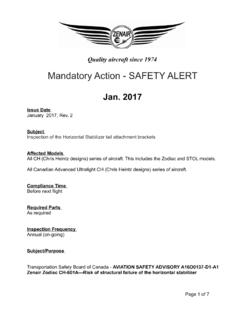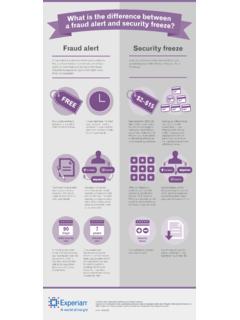Transcription of The Coding Institute Academy CEU-Approved …
1 Avoid 99173 Bundles by Offering Readily PaidVEP Vision Testing XThis amblyopia screening tool has its own codeIf you want to test nonverbal patients for visual impairments, you may want toconsider a visual evoked potentials machine that insurers often cover per test from alow of $30 to a high of $ payment for vision screening (99173, Screening test of visual acuity,quantitative, bilateral) can prove hard to come by, reimbursement is much morestraightforward for VEP test code 95930 (Visual evoked potential [VEP] testing centralnervous system, checkerboard or flash).
2 Instead of the SureSight Vision Screener(99173), I use the VEP machine (95930), says Richard Lander, MD, FAAP,apediatrician at Essex-Morris pediatric Group in Livingston, It is a good screeningtest for amblyopia that is able to test kids as young as 6 months old. Test Nonverbal Children With Staff-Run TestThe American Academy of Pediatrics Bright Futures evidence-based age-specificguidelines recommend that children have an early childhood vision screen at age 3 or 4years. And the Preventive Task Force, an independent panel of experts in primarycare and prevention that reviews the evidence of effectiveness and develops recommen-dations for clinical preventive services, recommends screening to detect amblyopia,strabismus and visual acuity defects in children younger than 5 years of.
3 A VEP machine, such as the Enfant pediatric Vision Testing Systemmanufactured by Diopsys, lets you detect visual deficits, such as optic nerve disorders,asymmetric refractive errors, and other problems that could lead to amblyopia inchildren who can t tell they have visual problems. The child may be preverbal or unreliably tested with subjective vision tests, saysDiane C. Fulton,director of insurance/medical Coding and billing for Diopsys Inc. inPine Brook, Or with older children, the patient may not recognize that he has aproblem because his sight seems normal to testing provides the doctor with an objective assessment of a child s vision forappropriate referral, diagnosis and treatment.
4 It s just not practical to send every childto a specialist for a test that the patient s pediatrician can do, Fulton says. This testmakes a difference in children s lives by catching vision problems that could affect theirdevelopment at a time when they are most receptive to treatment. Easy:A physician extender can run the test, which has Federal Drug Adminis-tration approval for children ages 6 months to 8 years. The machine requires notechnical certification. Diopsys provides complete training on the test s s in This IssueGet Paid for 95930 DuringE/M Using 2 ICD-9 out: Sometimes awell-check diagnosis isn t theway to goCase Study:Try 4 Strategies to Deter90472 Duplication forms reveal legitmultiple-IA billing methodsYou Be the E/M or Nosebleed Code?
5 Upcoming Bright Futures Guide pediatric Nuts and Bolts Phone Care ContractsReader QuestionsShould We Apply CCI Acrossthe Board?..46 How to Make a Time Doesn tCinch Special Service Codesas Provides Ammo for9944x , Vol. 11, No. 6 (Pages 41-48) PEDIATRICCODINGALERTPEDIATRICCODINGALERT The practical adviser for ethically optimizing Coding reimbursement and efficiency for pediatric practicesThe Coding InstituteAcademy CEU-ApprovedChallenge OR Coverage LimitationsSome plans may have outdated VEP policies. Forinstance, Oxford s guidelines limit VEP coverage to theoperating room or certain specialists.
6 Surgeons often useVEP to monitor brain function when performing delicateoperations close to the optic nerve. Some insurers need toupdate their policies to reflect the new use of VEPmachines in primary care, Fulton says. Action:Make a chart of your major payers VEPpolicies focusing on noncovered versus covered. Fultonfollows VEP reimbursement trends across the country andcan help facilitate this process or973-244-0622 ext 322). If an insurer states it is not acovered service, the patient has the option to pay at thetime of service, Lander says.
7 Expect Payment Most of the TimeCPT contains 95930 for VEP. Insurers reimburse thetest 80 percent of the time, depending on your payer mixand geographic area, Fulton says. The estimated 20 percent of payers that reject 95930coverage usually do so due to contractual issues. Theinsurer doesn t want to add the code to its capitationexceptions, Fulton says. Or, the payer requires aspecialist perform the test based on antiquated intra-operative VEP guidelines. Check Your Payers RatesMedicare allows $108 ( relative value units) for95930 nationally.
8 Therefore, for example from payers thatpay 120 percent of the 2008 fee schedule, you can expectabout $129. Insurers and Medicaid programs offer a widerange of 95930 plan payments range from $60 to $160. Aetna sets the gold standard of medical policies when itcomes to VEP, Fulton says. The insurer recognizes theimportance of early vision testing during a well state Medicaid plans cover VEP. Ohio Medicaidpays the code at a low of $30, with many other stateMedicaid plans paying about $ 42 Need Coding forms and books? Visit pediatric Coding alert /2008, Vol.
9 11, No. 6 pediatric Coding alert (ISSN 1098-1799) (USPS 016-894) is published by The Coding Institute , a subsidiary of Eli Research, 2222 Sedwick Road, Durham, NC 27713. 2008 The Coding rights reserved. Subscription price is $267. Periodicals postage is paid at Durham, NC, 27705 and additional entry : Send address changes to pediatric Coding alert ,PO Box 413006, Naples, FL Customer Discussion Rates: USA: 1 yr. $267; 2 yrs. $514 ($20 savings); 3 yrs. $751 (save $50). Bulk prices available upon cards accepted: Visa, MasterCard, American Express, DiscoverCPT codes, descriptions and material only are copyright 2008 American Medical Association.
10 All Rights Reserved. No fee schedules, basicunits, relative values or related listings are included in CPT. The AMA assumes no liability for the data contained herein. Applicable FARS/DFARSR estrictions Apply to Government Coding Alertis independent and not affiliated with any organization, HMO, vendor or company. Reasonable attempts have beenmade to provide accuracy in the content. Of necessity, however, examples cited and advice given in a national periodical such as this must begeneral in nature and may not apply to any particular case.





